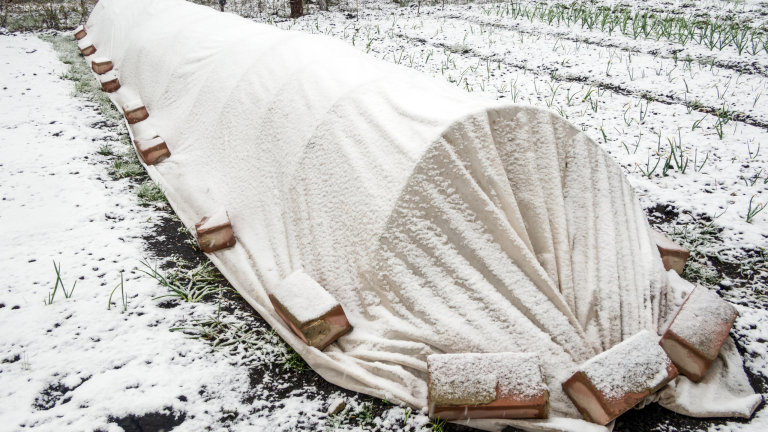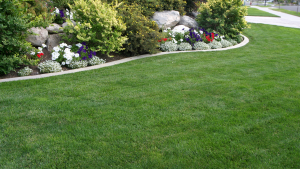As winter sets in, gardeners and homeowners alike turn their attention to the well-being of their outdoor greenery. Freezing temperatures can pose a threat to plants and trees, leaving them vulnerable to cold damage. In this guide, we’ll explore essential tips on protecting plants during freezes, ensuring that your botanical companions thrive even in the chilliest weather. If you’re in need of honest and objective information for your landscape decisions, Baton Rouge Landscaping Companies is the place to go.
Understanding the temperature threshold for plant freezing is crucial. Most plants start to experience damage when the temperature drops below 32°F (0°C). However, sensitive plants may face harm at higher temperatures, around 45°F (7°C). Being aware of these critical thresholds can help you take timely action to shield your green friends.
What Temperature Do Plants Freeze?
How to Protect Plants During Freezing
- Mulching: Applying a thick layer of mulch around the base of plants helps insulate the soil, preventing it from losing heat too quickly. This extra layer acts as a protective blanket, keeping the roots warmer during freezing temperatures.
- Covering Plants: Use blankets, burlap, or frost cloth to cover plants overnight when freezing temperatures are expected. This creates a barrier against the cold and traps some of the warmth from the soil, shielding the plants from frost.
- Watering Strategically: Watering your plants before a freeze can provide them with some insulation. Moist soil retains heat better than dry soil, so ensure your plants are adequately hydrated before the cold sets in.
- Choose Cold-Resistant Plants: When planning your garden, opt for plants that are well-suited to your local climate. Cold-resistant varieties are more likely to withstand freezing temperatures without sustaining significant damage.
- Bring Potted Plants Indoors: If possible, relocate potted plants to a sheltered area or bring them indoors during freezing nights. Container plants are more susceptible to temperature extremes, and this simple step can make a significant difference.
Frost vs. Freeze: Understanding the Difference
It’s essential to differentiate between frost and freeze. Frost occurs when dew or moisture freezes on surfaces, often creating a delicate, crystalline layer. On the other hand, a freeze refers to the actual temperature drop below freezing, potentially causing harm to plants. Knowing the distinction can help you tailor your protection measures accordingly.
Signs That Your Tree is Suffering From Cold Damage
Discolored Leaves: If you notice leaves turning brown or black, it’s a clear sign of cold damage. Frostbite can damage plant cells, causing discoloration and a weakened appearance.
Wilting or Drooping Foliage: Cold-damaged trees often exhibit wilting or drooping leaves, indicating stress on the plant. This is a visible response to the challenging weather conditions.
Bark Splitting: Extremely cold temperatures may cause the bark of trees to split. Inspect the trunk for any visible cracks or fissures, as this can lead to long-term damage.
Delayed Growth: Cold-damaged trees may experience delayed growth in the following season. Keep an eye on the overall health and development of your trees to identify any lingering effects.
Fruit or Bud Loss: If your trees produce fruit or buds, a freeze can lead to their premature drop. This loss can impact the overall health and productivity of the tree.
5 Ways to Protect Trees From Freezing Temperatures
- Wrap Tree Trunks: Use tree wraps or burlap to cover the trunks of young or susceptible trees. This safeguards them from harsh winds and temperature fluctuations.
- Apply Protective Coatings: Specialized anti-transpirant sprays or coatings can be applied to tree foliage to create a thin, protective layer. This helps reduce water loss and insulates against freezing temperatures.
- Provide Windbreaks: Erect temporary barriers, such as burlap screens or wooden panels, to shield trees from strong winds. Windbreaks can significantly reduce the impact of freezing temperatures.
- Prune Strategically: Pruning can help eliminate dead or damaged branches, ensuring that the tree’s resources are directed toward healthy growth. This minimizes vulnerability during freezing conditions.
- Use Heat Sources: Employing gentle heat sources, such as string lights or frost cloth, around tree canopies can provide additional warmth. Be cautious with heat sources to avoid any fire hazards.
Conclusion
Keeping your plants safe during freezes is about being aware and taking action. Understand when it gets really cold, know the difference between frost and freeze, and watch for signs that your plants might be getting hurt by the cold. Use blankets, water them, and plan carefully to protect your plants and trees from winter’s tough effects. Following these tips will help your garden not just survive but also do well, even in really cold weather. So, make sure to take care of your green friends, and you’ll have a beautiful garden all winter long!





